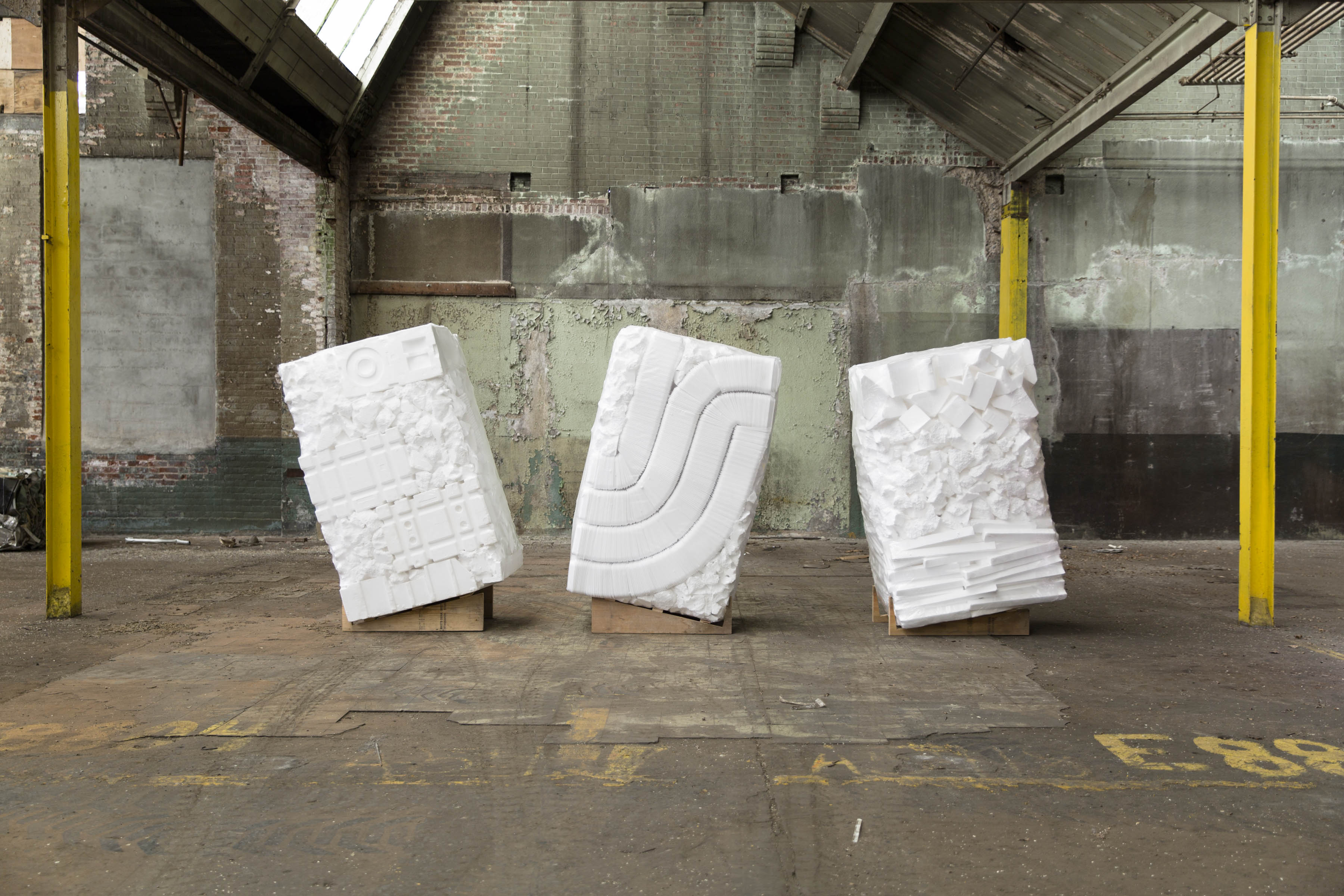An exhibition of new works by an interdisciplinary team of Northeastern University faculty members is currently on display at the Boston Cyberarts Gallery. The exhibition, entitled Re:Constructing Evidence, explores the role of evidence and practices of evidence construction – both physical and digital – in public controversies and civic life. The faculty team, who originally came together as 2018-2019 CAMD Dean’s Research Fellows, includes Meg Heckman, School of Journalism; Dietmar Offenhuber, Jennifer Gradecki, and Derek Curry, Department of Art + Design; and Ang Li, School of Architecture.
The exhibition features four case studies focused on climate change, preservation, assumptions in data analytics, and the construction of breaking news narratives. Rooted in discourses of architecture, journalism, media art and environmental humanities, these projects illuminate common themes around memory, community, social and scientific practices.
Computational Fables by Jennifer Gradecki and Derek Curry is an interactive video installation where participants chose between different video compilations to see the kinds of stories that data analytics companies tell about their products. The videos, which are algorithmically generated from a collection of data analytic companies’ promotional videos, showcase the frequently occurring images and metaphors.
ozone tattoo by Dietmar Offenhuber is an artistic research project to measure ozone pollution through indicator plants. ozone tattoos are reference patterns of ozone damage on plant leaves that help recognize ozone damage on the rest of the plant.
Salvage Units by Ang Li is an architectural installation that explores the material afterlives of modern consumption. Using expanded polystyrene (EPS) foam diverted from the landfill, the exhibition presents a monolithic building block whose form recalls the material systems of the waste-processing industry. The piece draws from the inventory practices of salvage yards and recycling centers – the stockpiling of trash into provisional units of bales, skids, and ingots – to illustrate the vast economies of scale associated with the redistribution of waste.
Breaking by Meg Heckman focuses on the April 19, 1995 Oklahoma City bombing as it was the first major news event many Americans followed using the Internet. Because of spotty digital archiving practices, there are no known visual records of how stories, photos, and other content appeared online in the hours and days after the tragedy. The installation attempts to fill that gap by using interviews with journalists from USA Today and The Washington Post to recreate the online news they produced on that deadly day. It also ponders the media consumption experiences of the nascent digital audience. Professor Heckman was assisted by two students: Gibson Free who is a journalism/computer science undergrad and Aria Bracci, graduate student.
The exhibition is open through October 25. Please join them for an opening reception on October 4 at 6 p.m., with an exhibition walk-through beforehand at 5 p.m.


